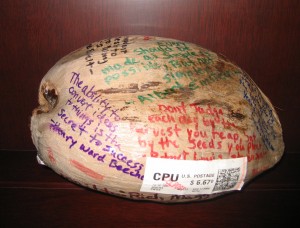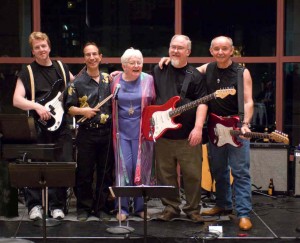Immediately impress your clients and prospects with strategic three-dimensional marketing
“The nut” arrived in the mail, as is, without a box, for a deep visual impact. The postal carrier was so impressed, she had to stop in and hand it to me personally. Why? Because “the nut” is a coconut!—a three-dimensional fruit sent to gain my attention. And that it did.
 Hand-written quotes from numerous famous and influential people cover “the nut”. Karl Schweitzer, president and founder of MobiRez, a client, colleague, and friend, sent me “the nut” to honor our relationship and to make an impression. For him, it was the perfect marketing device.
Hand-written quotes from numerous famous and influential people cover “the nut”. Karl Schweitzer, president and founder of MobiRez, a client, colleague, and friend, sent me “the nut” to honor our relationship and to make an impression. For him, it was the perfect marketing device.
Consider, for a moment, the effectiveness of your marketing if you sent your version of “the nut” to tightly targeted prospects. It most definitely would be remembered; people would stop to admire and inspect it. It could even become the buzz of the office. On thing is for sure—it would make an impact.
Imagine sending these three-dimensional mailings to your current clients, to thank them. Karl wanted to further solidify what was an already sound relationship. That he accomplished.
Three-dimensional marketing. At a marketing conference a few years ago, one pundit told us of the value of three-dimensional marketing. “We’re partial to sending blocks of wood,” he said. I asked my Art Director what she thought of that idea. She said simply, “out of context”. She continued. “A block of wood has nothing to do with what we do, there is no connection, no context. What would be more effective is a 3-D mailer with a direct connection to who we are and what our prospects gain from collaborating with us.”









